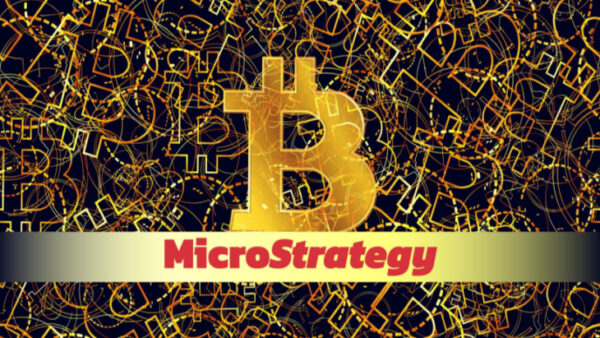Request Crypto: Lots of Potential Upside to This Speculative Token
Request crypto has been around since 1997. But for most of its existence, it had mostly traded for just a few cents per token. However, a major boost in interest came from it being added to the Coinbase exchange. This was welcomed news for traders and long-term holders. And it was further proof of the big shift in Coinbase’s philosophy.

Not long ago, a listing on Coinbase equaled a major stamp of approval. To get listed on Coinbase, crypto engineers had to jump though a lot of hoops. In the process, they really had to prove to Coinbase thier token was worthy of a listing. In this way, the exchange acted as a sort of crypto gatekeeper.
More recently, though, Coinbase has changed its tune… as you can see in this tweet from its CEO:
1/ Reminder about how Coinbase lists assets: our goal is to list *every* asset where it is legal to do so.
— Brian Armstrong (@brian_armstrong) June 28, 2021
He went on to mention that beyond the exchange’s listing standards (regarding safety and legality), this was a move toward freer markets. And, as he concluded, it was the way to make Coinbase more innovative. It also happens to be a way that can make Coinbase more money. After all, the more tokens it lists, the more opportunities there are for trades. And charging trading fees is a big part of how Coinbase makes its coin.
So no complaints from the peanut gallery here. Coinbase is a publicly traded company now. It’s beholden to its shareholders. And increasing profits is one of the easiest ways to keep shareholders happy.
But now back to the important information on Request crypto (REQ).
All About Request Crypto
In a nutshell, Request crypto is a utility token. It was created to ensure the stability and performance standards of the Request Network. This network is an Ethereum-based decentralized payment system. It allows folks to request a payment and receive money in a secure way. It also removed third-party oversight requirements. This is an important detail… because it’s one of the quickest ways to reduce transaction costs.
The other key benefit of the Request Network is that it works with currencies all around the world. It’s not limited to just crypto. It’s not limited to fiat currencies. It transfers dollars to the Korean won and just about everything in between. It’s a robust network with an impressive amount of capabilities.
This process works by having one user create a payment request – or invoice. The invoice needs to include the address the payment should be sent and the amount it should be in. The terms of payment can also be included here for business transactions. Then, the request is delivered to the payer of the invoice. All the while, each and every step of the process is stored on the Request Network. This makes it easy to keep track of transactions, both for the payer and the payee.
The last thing worth mentioning about the Request Network – which is powered by Request crypto – is that it has incorporated laws from all around the world. This, it hopes, will keep it compliant with the various trade laws of every country around the world… an impressive feat in of itself.
There really is some exciting engineering behind both the Request Network and the Request crypto that powers it. But as far as payment systems go, it does have a lot of competition. And not just from the likes of Visa (NYSE: V), Square (NYSE: SQ) or PayPal (Nasdaq: PYPL).
The Competition Is Stiff
Beyond the legacy payment processing companies mentioned above, there are lots of other companies operating in the crypto space now. Circle, which issues the stablecoin USD Coin (USDC), has been in the payment processing game for close to a decade. Incidentally, it was the first company to receive a BitLicense from the New York State Department of Financial Services.
Request crypto also faces competition from Solana crypto and, to a lesser extent, Telcoin. Then of course there is Coinbase Commerce, Electroneum, BitPay or CoinGate, among others. But specifically for business-to-business applications, Request crypto and the network it supports still manage to stand out. What it boils down to though is adoption.
This could be an exceptional tool for freelancers who pick up jobs around the world. Business consultants, writers, web designers and recruiters could all make good use of this type of payment system. And it has the possibility of cutting down on the paperwork needed for quarterly tax filings… since payments are vetted though international trade laws.
The Bottom Line on Request Crypto
As an experiment, there’s a lot to like about the Request Network. As an investment, there’s reason for both excitement and pause. It’s a penny crypto, after all…
Since its inception in 2017, it has yet to break the $1 mark. In fact, not long ago, you could pick it up for less than $0.05 a token. But trading volume has changed all of that. With the Coinbase listing came a lot of interest. Around 200% more interest than usual. If trading volume stays anywhere near that level, anything’s possible. And with the more recent spike, Request crypto looks as if it could finally launch past the $1 any day now… But that’s far from certain.
As a buy-and-hold play, Request crypto could be worth a gamble. If the Request Network does begin to catch on, you could see a slow but steady rise in value. But that’s a very big “if.” That being said, it’s a token we’ll be keeping a close eye on. A little momentum and an uplisting to Coinbase could be enough for companies to take notice of Request’s underlying capabilities.
While there’s some risk with just about any investment opportunity, some are a little safer than others. And those are the ones crypto expert Andy Snyder spends his days looking for. If you’d like to receive his detailed analysis and learn how to better protect your investment dollars, we suggest signing up for Manward Financial Digest. In it, Andy shows new and experienced investors the key components to look for before sinking money into a bad deal. To get started, just enter your email address in the box below.
About Matthew Makowski
Matthew Makowski is a senior research analyst and writer at Investment U. He has been studying and writing about the markets for 20 years. Equally comfortable identifying value stocks as he is discounts in the crypto markets, Matthew began mining Bitcoin in 2011 and has since honed his focus on the cryptocurrency markets as a whole. He is a graduate of Rutgers University and lives in Colorado with his dogs Dorito and Pretzel.





